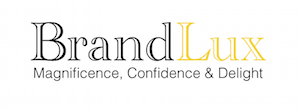Imagine a luxury brand that we shall call BrandLux. It has been around “Since 1848” and has a loyal, if aging,and sophisticated clientele. Its founder built the company on a slogan, “The Art of Magnificence.”
It has values that are etched in the oakwood panels at the HQ entrance way and that you can find engraved discretely inside each BrandLux article: Magnificence, Confidence & Delight. Recently, however, sales have been sluggish and certain distributors have delisted BrandLux. The reviews of their latest new product line at the last seminal Luxury Brands Congress were less than glowing. Management held a closed-door strategic session, including a presentation from their Communications agency as well as an Expert Consultant. The result was a list of new projects – many of which include a “digital” component — added to the to-do lists for each of the executives, who already have been working long hours. But, will the new initiatives work? Does this sound at all familiar to you?
Digital transformation for luxury
In today’s internet-enabled world, luxury brands can no longer hide behind a wall of opacity and unequal information. Whether or not top management likes it, the brand conversation is happening online, in forums, social media and, increasingly, via mobile devices. Pressure to sell directly online is coming from all quarters, most importantly from customers. More disconcertingly, the pressure to have a superior customer experience — warranting the higher prices — is coming from below (mass brands) and from distributors (Amazon, Netaporter, etc.). The challenge for these luxury brands is to identify the digital priorities and implement them in a way that does not disturb too much their installed base (of wealthy clients and traditional distribution…) and near-term sales. Thus, other than a few notable exceptions, digital transformation for luxury brands has been slow to roost.
Luxury values
The digital opportunities and the necessary digital mindset, appear either paradoxical or antithetical for luxury brands. Rare are they that tout values such as transparency, agility, openness, responsiveness… {Tweet this!} Moreover, it is particularly hard for luxury brands — such as a BrandLux — to accept a daring, experimental, test & fail attitude when aspiring to create the perfect brand experience. If such values and attitudes are not necessarily easy to reconcile with a luxury environment, they are typically associated with the digital world. But, my key point here is not to oblige or even recommend that luxury brands concern themselves with morphing and contorting themselves to accommodate such ‘digital’ values. The real issue is making the de facto values of the company come alive for the employee.
Embedding values and employee engagement
The biggest point of difference in a luxury good will be in the surrounding service and services, including the pre-store research, the in-store experience and the after-sale service. Each of these will require a digital component and, to varying degrees, a human interaction. Where and how the brand’s luxury values are being exercised and demonstrated to the customer via digital and employee interactions will make or break the perceived value of the good.{Tweet this!} Take the value of confidence of the fictional BrandLux.How is the organization promoting confidence internally? To what extent do the employees exude personal confidence without becoming perceived as arrogant? How is confidence being provided with regard to customer data? Luxury brands with such luxury values need to find ways for these values to be embedded into the way the organization functions, how staff are recruited, trained and retained. In the end of the day, in this digitally enhanced world, where employees are on the front line providing the surround-sound service that must accompany the luxury product, a major effort is needed to make sure the brand values are coherent and congruent within as well as outside the organization.{Tweet this!} An employee that lives and feels in accordance with the brand’s values is a truly engaged employee. Without such consistency and alignment, there will be inevitable degradation. The digital mindset is shaking up luxury brands. Those that have a solid vision and purpose — and a greater liberty and entrepreneurial flair — have probably got a significant leg up on the more classically managed brands that might be stuck within a larger corporate structure.{Please tweet this!}
Your thoughts and reactions are, as always, welcome!











